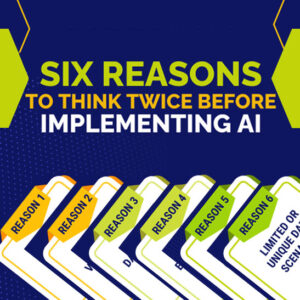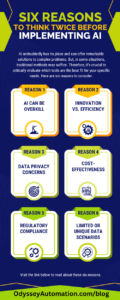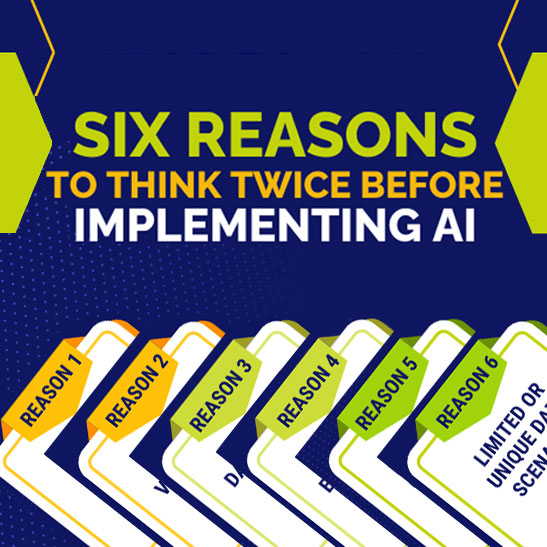 Six Reasons to Think Twice Before Implementing AI
Six Reasons to Think Twice Before Implementing AI
In today’s tech-driven world, artificial intelligence (AI) is often hailed as the ultimate solution to almost every problem. However, there are many situations where traditional methods not only suffice but may be preferable. Here we look at six key reasons why you might want to stick with conventional approaches rather than rushing to implement AI.
AI can be overkill
Sometimes, the simplest solution is the best. AI systems are powerful tools designed to handle complex, data-intensive tasks, but not every problem requires such sophisticated technology. For many straightforward processes, traditional methods can provide equally effective results without the added complexity.
For example, invoice processing where the invoices follow a standard format and there are clear, repeatable steps, would be better addressed using deterministic rules and workflow.
Pantheon’s Odyssey digital automation platform is a no-code solution that combines UI and forms development, integration and workflow, AI / ML and NLP with a robust rules-engine, enabling automation solutions for all levels of complexity.
Click the infographic below to view a larger image.
 Innovation vs. efficiency
Innovation vs. efficiency
While AI can offer innovative solutions, it’s not always the most efficient or practical approach. In many cases, well-designed traditional software architectures or business processes can achieve the same goals more reliably and with greater ease of maintenance.
For example, OCR (Optical Character Recognition) can extract text from scanned documents or images and can be particularly useful for extracting data from forms, invoices, receipts, and other structured documents. The latest AI vision algorithms can produce similar results; however, vision would be more appropriate where the scanned images are of a poor or low quality or highly unstructured. Tools such as Odyssey, with its pluggable architecture, can support both methods.
Data privacy concerns
AI systems often require large amounts of data for training and operation. In situations where data privacy is paramount or there is a lack of historical data, traditional methods that don’t require extensive data sharing might be preferred.
Healthcare patient data management, for example, is subject to strict regulations such as HIPAA (in the US) and GDPR (in Europe). A traditional rules-based automation system can be configured to follow these regulations precisely.
Cost-effectiveness
While AI can potentially save money in the long run for certain applications, the initial investment in AI technology can be substantial. This includes not just the cost of the AI system itself, but also the necessary infrastructure, data preparation, and ongoing maintenance and updates.
Consider exception handling for invoice processing. When unusual cases arise, it would be easier and more cost-effective to add new rules with a rules-based automation solution than to retrain an AI model.
Regulatory compliance
Many industries are subject to strict regulations that may not yet fully account for AI systems. In such cases, using traditional methods can ensure compliance and avoid potential legal issues.
In the financial sector, for instance, certain decision-making processes might need to adhere to specific regulatory guidelines. Using traditional, rule-based systems with clear audit trails might be preferable to AI systems that make decisions through less transparent means.
Limited or unique data scenarios
AI often requires large datasets to perform well. In situations where data is limited or highly specialized, traditional statistical methods or rules-based systems might be more suitable. The notion of data minimization in healthcare is one example. Tools like Odyssey can be configured to access and process only the minimum necessary patient data for a given task, adhering to the principle of data minimization.
Conclusion
While AI undoubtedly has its place and can offer remarkable solutions to complex problems, it’s crucial to critically evaluate whether it’s the right tool for your specific needs. Traditional methods have stood the test of time for good reason, and in many cases, they continue to offer the most practical, cost-effective, and reliable solutions.
Pantheon’s Odyssey platform with AI-driven automation (AIDA) provides the best of both worlds. It provides the flexibility to solve problems using traditional workflow and rules-based automation methods to advanced AI/ML and NLP solutions.


